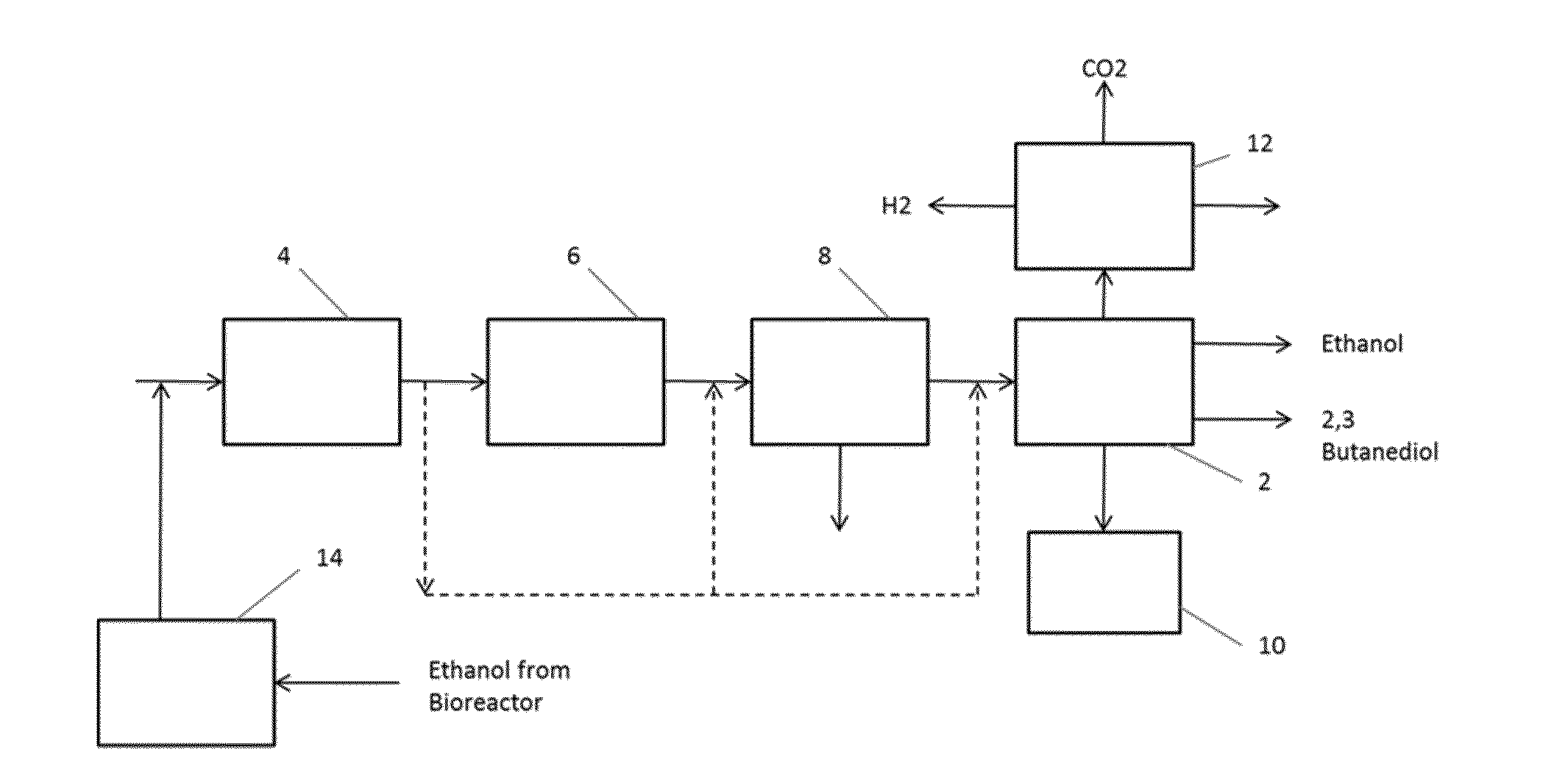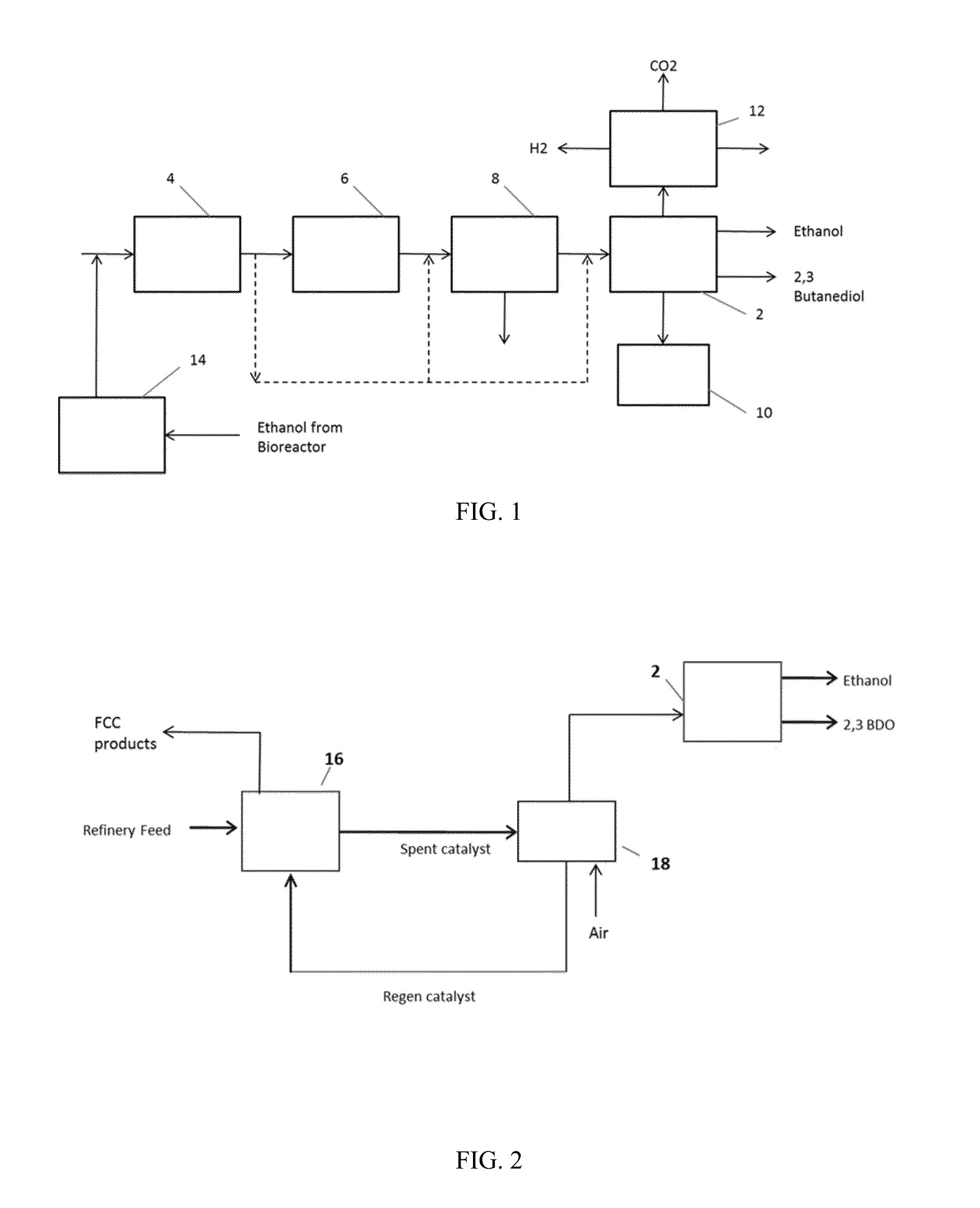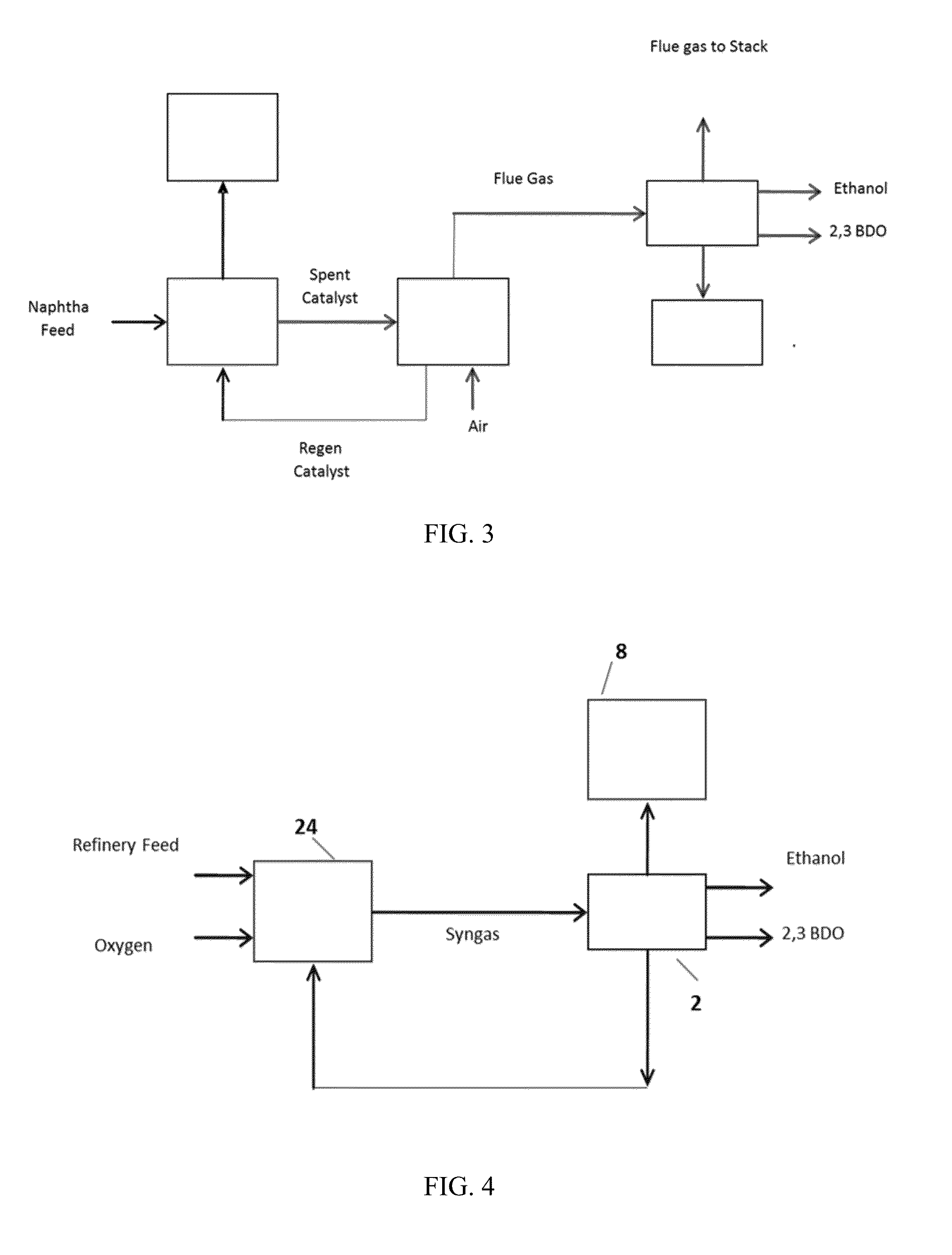Methods and Systems for the Production of Hydrocarbon Products
- Summary
- Abstract
- Description
- Claims
- Application Information
AI Technical Summary
Benefits of technology
Problems solved by technology
Method used
Image
Examples
example 1
[0335]1.4 litres of media solution A was aseptically and anaerobically transferred into a 2 L CSTR vessel, and continuously sparged with N2. Once transferred to the fermentation vessel, the reduction state and pH of the transferred media could be measured directly via probes. The media was heated to 37° C. and stirred at 400 rpm and 1.5 ml of resazurin (2 g / L) was added. 1.0 ml of H3PO4 85% was added to obtain a 10 mM solution. The pH was adjusted to 5.3 using NH4OH. Metal ions were added according to solution B and 15 ml of solution C was added. 3 mmol cysteine-HCl was added and the pH was adjusted to pH 5.5 using NH4OH.
Results
[0336]
TABLE 1SerumincubationAcetateEthanolHeadspacebottleDatetime (days)(g / L)(g / L)(PSI)SB108 Jun. 2011 13:450.00.880.0924.0SB208 Jun. 2011 13:460.00.90.1224.6SB109 Jun. 2011 12:331.01.440.1922.8SB209 Jun. 2011 12:331.01.570.1721.3SB110 Jun. 2011 9:251.81.390.4417.9SB210 Jun. 2011 9:251.81.490.4519.2
TABLE 2Gas CompositionIncubationH2SSerumbottleTimeCO2COH2N2(p...
example 2
Serum Bottles
[0338]1.9 litres of media solution A was aseptically and anaerobically transferred into a 2 L CSTR vessel, and continuously sparged with N2. Once transferred to the fermentation vessel, the reduction state and pH of the transferred media could be measured directly via probes. The media was heated to 37° C. and stirred at 400 rpm and 1.5 ml of resazurin (2 g / L) was added. 1.0 ml of H3PO4 85% was added to obtain a 10 mM solution. 2 g ammonium acetate was added and the pH was adjusted to 5.3 using NH4OH.
[0339]NTA (0.15M) was added to five a final concentration of 0.03 mM. Metal ions were added according to solution B and 15 ml of solution C was added. 3 mmol cysteine was added and the pH was adjusted to pH 5.5 using NH4OH.
[0340]Incubation was performed in three 250 ml sealed serum bottles (SB1, SB2 and SB3) containing 50 ml of the media. Each bottle was inoculated with 1 ml of a growing culture of Clostridium autoethanogenum (DSMZ number 23693). The headspace gas was then ...
example 4
[0343]1.4 litres of media solution A was aseptically and anaerobically transferred into a 2 L CSTR vessel, and continuously sparged with N2. Once transferred to the fermentation vessel, the reduction state and pH of the transferred media could be measured directly via probes. The media was heated to 37° C. and stirred at 400 rpm and 1.5 ml of resazurin (2 g / L) was added. 0.56 ml of H3P04 85% was added to obtain a 5 mM solution. The pH of the solution was measure at 5.3. Metal ions were added according to solution B and 15 ml of solution C was added. 3 mmol cysteine-HCl was added and the pH was adjusted to pH 5.5 using NH4OH. The ORP of the media solution was adjusted to −170 by the addition of Na2S. The media was inoculated with 200 ml of actively growing culture of Clostridium autoethanogenum (DSMZ number 23693). The initial gas mixture was a real mill gas having the following composition; 44% CO, 32% N2, 22% CO2, 2% H2. The gas mixture was switched on day 1 to a mixture having the...
PUM
 Login to View More
Login to View More Abstract
Description
Claims
Application Information
 Login to View More
Login to View More - R&D
- Intellectual Property
- Life Sciences
- Materials
- Tech Scout
- Unparalleled Data Quality
- Higher Quality Content
- 60% Fewer Hallucinations
Browse by: Latest US Patents, China's latest patents, Technical Efficacy Thesaurus, Application Domain, Technology Topic, Popular Technical Reports.
© 2025 PatSnap. All rights reserved.Legal|Privacy policy|Modern Slavery Act Transparency Statement|Sitemap|About US| Contact US: help@patsnap.com



